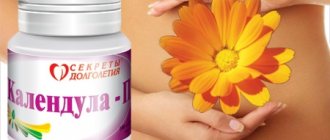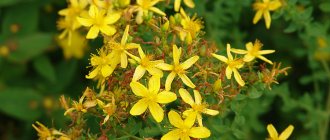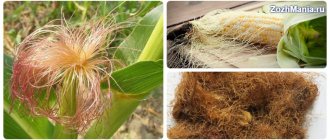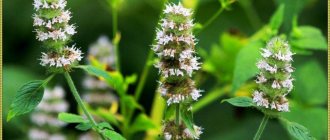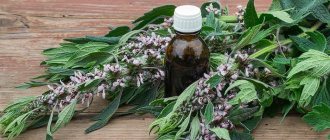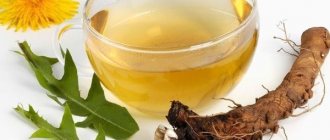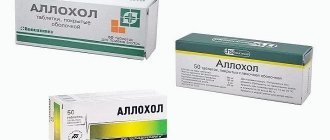An important condition for the treatment of exacerbation of pancreatitis is adherence to a strict diet. During the first three days, the patient must fast, then the diet gradually expands. The bulk of permitted dishes are rather bland and tasteless, as they are prepared without adding salt or seasonings. You can improve the taste and aroma by adding natural flavors – herbs – to your dishes. Not all greens are allowed for pancreatitis and not at all stages of the disease.
The use of calendula for the treatment of pancreatitis
The healing properties of calendula are due to its multicomponent composition. The main active ingredient of the calenden plant provides the main clinical effect. Its effect is enhanced by all additional components.
For inflammation of the pancreas, calendula preparations are used for various purposes. They can be divided into three levels:
- Preventative treatment. Prescribed to people who have prerequisites for the disease (diseases of the biliary tract, endocrinopathies, alcoholism).
When prescribing treatment, the following factors must be taken into account:
- blood pressure stability;
- patient's age;
- presence of concomitant diseases (especially cancer);
- tendency to allergies;
- pregnancy.
Contraindications and side effects
Like any medicine, calendula has a number of contraindications:
- Cardiovascular failure;
- Low blood pressure;
- Bradycardia;
- Pregnancy;
- Individual intolerance.
When prescribed correctly, taking into account all medicinal properties and contraindications, calendula is well tolerated by most patients and does not have unwanted side effects. People with bronchial asthma and a tendency to allergic reactions (urticaria, angioedema, etc.) should consult a doctor about the possibility of taking this medicinal herb.
Healing properties of calendula components
Calendula has a unique chemical composition, which includes carotenoids, flavonoids, triterpinoids, coumarins, essential oils, minerals, organic acids, resins, and vitamins. These substances provide such medicinal properties as:
- anti-inflammatory;
- bactericidal;
- antispasmodic;
- choleretic;
- wound healing.
Anti-inflammatory properties are provided by carotenoids, coumarins and triterpenoids. They relieve inflammation and swelling of the pancreas.
The flavonoids included in the composition have regenerative abilities, stop dystrophic changes in the parenchyma, and improve metabolic processes at the cellular level.
Calendula has a strong antispasmodic effect. It relieves attacks of pain of varying intensity and has a calming effect on the nervous system.
The antioxidants included in its composition reduce intoxication, eliminate dyspeptic disorders, improve appetite and sleep.
Numerous microelements (calcium, potassium, magnesium, zinc, copper, selenium) provide bactericidal properties, prevent possible complications, and strengthen the body's protective function.
Phytotherapeutic properties of parsley and its composition
Today, parsley has firmly entered our lives, its fresh emerald leaves are present in recipes for many dishes, but few people know that in addition to its vitamin composition, it was used as a cure for many serious diseases. Its phytotherapeutic properties have not been forgotten in our time; the plant is successfully used for many diseases, including pancreatitis.
| Vitamins | Microelements |
| Beta-carotene (same as in carrots) Vitamin K Retinol (A) Thiamine chloride (B1) Folic acid (B9) Vitamin B6 Riboflavin (B2) Nicotinic acid (PP) Biotin (H) Tocopherol (E) Ascorbic acid (vitamin C) | Copper Zinc Potassium Iron Selenium Magnesium Sodium Manganese Calcium Phosphorus |
A common garden plant for us has the following healing properties:
- Shows antioxidant effect.
- Regulates the menstrual cycle.
- Improves immunity.
- Stimulates the functioning of the adrenal glands.
- Promotes the production of breast milk.
- Strengthens vascular walls.
- Has an anti-inflammatory effect.
- Improves metabolic processes.
- Regulates blood glucose levels.
- Increases intestinal tone.
- Improves visual acuity.
- Normalizes high blood pressure.
- Supports the functioning of the thyroid gland.
The list of unique properties of parsley does not end there.
Contraindications to the use of calendula for pancreatitis
The use of calendula should be treated with caution. Like any medicinal plant, it has its contraindications. Among them:
- pregnancy;
- allergies and individual intolerances;
- associated diseases: hypotension (low blood pressure), bradycardia (slow heartbeat), exacerbation of stomach ulcers;
- simultaneous use with pharmacological drugs (barbiturates);
- joint use with soothing herbs (mint, valerian, motherwort);
- age up to 12 years.
Contraindications are also relevant in the following cases:
- if there is no guarantee of the purity of the raw materials;
- in case of violation of the prescribed dosage;
- during self-medication, when the diagnosis is not confirmed by medical research.
Contraindications and side effects
Calendula, like any herbal remedy, has certain medicinal properties, as well as a number of contraindications that must be taken into account. Due to the multicomponent composition and its effect on the body, there are contraindications for use:
- allergic reactions and individual intolerance to individual components,
- pregnancy, breastfeeding period, age up to 12 years,
- gastric ulcer during exacerbation,
- low blood pressure,
- bradycardia (slow heartbeat).
It is not recommended to use medicinal marigolds simultaneously with drugs that depress the function of the central nervous system (sedatives, barbiturates), as well as herbs with similar effects.
Possible side effects in the form of itching, redness of the skin, especially in people prone to allergies to plants of the Asteraceae family.
Recipes for making your own medicine from calendula for pancreatitis
At home, you can prepare a decoction of calendula, alcohol tinctures or water infusion, as well as oil enriched with valuable plant raw materials.
Alcohol tinctures
- Ingredients: 1 tbsp. l. inflorescences, 250 ml 40% alcohol. Grind the flowers, add alcohol, leave for 7 days, then strain.
- Ingredients: 100 gr. inflorescences, 0.5 l of 70% alcohol. Place the flowers in a container, add alcohol and let it brew for 14 days in a place protected from sunlight. The tincture needs to be shaken periodically. Then squeeze and filter.
Alcohol tinctures are used internally according to the following scheme: treatment begins with 20 drops. Then gradually increase the dosage, bringing it to 1 tbsp. l. at once. Number of doses: 2-3 times a day. Alcohol tinctures are prescribed in courses of 1 month. Contraindication to the use of alcohol tinctures is adolescence.
Water infusions
Take 2 tsp. inflorescences, pour 0.5 l. boiling water and leave covered for 60 minutes. Throughout the day, drink half a glass of infusion (1 tablespoon at a time).
Pharmaceutical preparations of calendula for pancreatitis
Calendula is included in the following pharmacological preparations:
- Caleflon ─ purified calendula extract. Available in tablets. Relieves inflammation, increases secretory function, stimulates tissue repair.
- Rotokan ─ alcohol solution. Ingredients: calendula, chamomile, yarrow. Indicated for all gastroenterological diseases.
Neither self-prepared infusions and decoctions, nor dosage forms purchased at the pharmacy should be used for self-medication. In case of acute or chronic pancreatitis, you should consult a doctor who, in addition to medications, may prescribe herbal medicine.
You can learn even more about the beneficial properties of calendula by watching the video:
The healing plant calendula, or as it is popularly called, marigold, has many positive qualities. It can be used as an individual remedy and as part of a herbal collection used to treat pancreatic pathology of the pancreas and other diseases affecting the digestive tract. Moreover, calendula is widely used in the decorative floriculture industries, is not fussy and is grown in household plots and summer cottages. Only its inflorescences are used for medicinal purposes. In the materials of this article, we will look in more detail at what medicinal properties and contraindications calendula has for pancreatitis, as well as how to use it correctly for medicinal purposes.
Reviews about parsley treatment
Galina, 46 years old: I have the initial stage of pancreatitis. In addition to prescribed medications, I always pay attention to available natural medicinal recipes. Parsley with milk helps especially well - unpleasant soreness disappears and well-being improves. I recommend this remedy to anyone who suffers from pancreatic disease!
Nikolai, 65 years old: I would like to share my impressions of the treatment of chronic pancreatitis with a folk remedy based on parsley, lemon and garlic. I took this medicine for a course of 2 months. According to my observations, the therapeutic result is very good, but before using it, be sure to consult a gastroenterologist.
Sergey, 39 years old: I recently learned about the healing properties of ordinary garden parsley for pancreatitis. I consulted with the attending physician, he suggested how to properly take the herbal medicine and outlined a treatment regimen. Upon completion of the course, my health improved noticeably, and the manifestations of pancreatitis were practically reduced to zero.
Chicory root
Use of calendula in the treatment of pancreatic disease
Treatment of the pancreas with calendula is prescribed due to its multicomponent chemical composition, which includes:
- varieties of polysaccharides;
- acids of organic origin;
- phytoncides and essential oils;
- flavonoids;
- various resins and tannins;
- nitrogen-containing mucus;
- components of mineral origin, such as zinc, magnesium, potassium, iron, calcium and many others. etc.
With the development of an inflammatory process in the pancreatic cavity, calendula can be used for different purposes, which are divided into three main groups:
- As a preventive treatment prescribed to those patients who have a high level of predisposition to the development of pancreatic disease against the background of pathological dysfunction of the biliary tract, poor diet, alcoholism, etc.
- Calendula for acute pancreatitis is used as an additional treatment to drug therapy to relieve pain and stop the development of pathology. Its use in such situations can only be carried out under the strict supervision of qualified specialists.
- In chronic or severe forms of pancreatic pathology, the use of calendula, which is part of a complex multicomponent collection used in combination with medications, is prescribed.
Before prescribing such treatment, the following conditions of the patient’s body must be taken into account:
- Blood pressure should be normal and stable;
- biological age;
- concomitant diseases, especially the presence of tumors of an oncological nature;
- the likelihood of an allergic reaction;
- pregnancy period in women.
If the patient has a pronounced tendency to exhibit allergic reactions, then this factor will be high on the list of obvious contraindications to treatment through herbal therapy.
The healing qualities of calendula
Thanks to their unique chemical composition, marigolds have the following range of medicinal properties:
- antibacterial;
- anti-inflammatory;
- antispasmodic;
- wound healing;
- choleretic.
The anti-inflammatory effect in the treatment of pancreatitis in the pancreas through the use of calendula is achieved due to the content of carotenoids, triterpenoids and coumarins in the medicinal herb, which relieve swelling and the inflammatory process.
The content of flavonoids in calendula provides it with regenerative abilities that help stop the development of dystrophic changes in the parenchyma cavity and improve metabolic processes at the cellular level.
It is important to remember that medicinal marigolds have a powerful antispasmodic effect. They help relieve pain of varying intensity, and also have a calming effect on the central nervous system.
Reducing intoxication of the whole body during the development of pancreatic pathology is provided by antioxidants, which also increase appetite, normalize sleep and eliminate disorders of the dyspeptic system in the body.
Presence of contraindications
The use of such a medicinal plant as medicinal marigolds should be prescribed only by the attending physician, since due to the wide range of medicinal effects, this plant also has a wide list of contraindications, among which are:
- pregnancy period;
- allergic reactions and intolerance by the body to herbal remedies;
- the presence of concomitant pathologies in the form of bradycardia, acute ulcerative lesions of the gastric cavity or hypotension;
- combination with barbiturates and drugs with a sedative (calming) spectrum of action;
- the patient's biological age is less than 12 years.
It is important to remember that self-medication of pancreatic pathology may not give the expected results, and even worsen the course of the disease and the patient’s general well-being. Therefore, it is necessary to use even herbal remedies from the list of traditional treatments only after consultation with an experienced specialist.
Ways to use calendula
You can make healing decoctions, alcohol-based tinctures, or water-based infusions from calendula yourself. Let's look at the most popular recipes for preparing a healing remedy with calendula.
Alcohol tinctures
- Take 1 tbsp. l. flower baskets of marigolds and ¼ liter of alcohol with a strength of 40%. Finely chop the marigolds and pour in the prepared alcohol. Leave to infuse for a week, then strain.
- 2 tbsp. Grind spoons of marigolds and pour 200 ml. 70% ethyl alcohol, close and leave to infuse for 7 days, then strain.
The prepared alcohol tincture must be taken orally, starting herbal medicine by taking 20 drops 2-3 times a day. Over time, the dosage should be gradually increased, bringing it to 1 tablespoon at a time. The duration of course treatment should not exceed 30 days.
Healing decoction
To prepare the decoction you need 2 tbsp. l. place dry raw materials in 500 ml of clean water and put on fire. After boiling, reduce the heat and simmer for another 5 minutes. After this, strain the broth and drink 1/3 cup at least 4 times a day before meals.
Water-based infusion
You need to pour 2 teaspoons with half a liter of boiled hot water, close with a tight lid and leave to infuse for an hour. After which the infusion can be consumed one tablespoon at a time. For the entire day, at least half of one glass of the resulting infusion should be drunk.
Treatment of acute or chronic pancreatic pathology can be supplemented by the use of medicinal plants in the form of calendula, but only as prescribed by the attending physician.
Under no circumstances should you use herbal remedies for self-medication, as this can lead to irreversible consequences and serious complications.
The healing plant calendula, or as it is popularly called, marigold, has many positive qualities. It can be used as an individual remedy and as part of a herbal collection used to treat pancreatic pathology of the pancreas and other diseases affecting the digestive tract. Moreover, calendula is widely used in the decorative floriculture industries, is not fussy and is grown in household plots and summer cottages. Only its inflorescences are used for medicinal purposes. In the materials of this article, we will look in more detail at what medicinal properties and contraindications calendula has for pancreatitis, as well as how to use it correctly for medicinal purposes.
Dietary dishes for weight loss from chicken, fish, meat | Magazine It's time to diet
The peculiarity of dietary dishes is the correctly selected products and method of preparation. It is necessary to avoid frying in large amounts of oil and smoking. Salting or pickling is undesirable, but boiling, steaming or grilling and baking are desirable. We will advise you on how to properly prepare dietary meals for weight loss so that they are tasty and healthy.
Usually chicken fillet is used to prepare dietary chicken dishes, but any part of the bird without skin and fat can work. Chicken meat is low in calories, yet it is easily digestible and can provide the required amount of protein. If you want to get the most low-calorie dish, you can simply boil the chicken breasts and serve with lemon juice.
What to do if you have diabetes?!
Read more >> |
- 200 grams of boiled chicken breasts,
- 400 grams of broccoli,
- one carrot,
- one yolk,
- a tablespoon of olive oil,
- teaspoon lemon juice,
- a little salt.
Broccoli and carrots must be chopped and simmered for 10 minutes, or, alternatively, cooked in a double boiler. The meat must be cut into thin strips and mixed with vegetables, add lemon juice and olive oil, and top this salad with grated egg yolk. The yolk here is not just a decoration, it also helps to fully absorb calcium from broccoli, due to the vitamin D present in it. This dish will become a light and satisfying dinner and will help strengthen bone tissue.
To prepare dietary fish dishes, you usually choose low-fat fish, for example, hake. It is usually recommended to boil it, cook it in its own juice or bake it without adding oil. Many people think that hake in its own juice is something incredibly boring and bland, so we will offer a hake recipe that will change all ideas about dietary dishes.
The dish is called “hake in a jar” because it actually needs to be cooked in a glass jar. The dish is very simple, so everyone can do it. To prepare a dietary fish dish you will need:
- liter glass jar with a metal lid;
- half a kilogram of hake fillet or other low-fat fish;
- half a medium sized carrot;
- half a bell pepper;
- a small head of onion or 6-7 centimeters of the white part of a leek;
- 2 allspice peas;
- 1 bay leaf;
- a couple of sprigs of dill and basil;
- a tablespoon of vegetable oil.
The fish should be cut into small pieces, the carrots should be grated, and the vegetables should be chopped. All components of the dish must be placed in a jar, leaving a little room for boiling. If there is too much fish, it must be compacted with a spoon.
The jar must be closed with a lid, but not screwed on. Place a cotton cloth at the bottom of the pan and place the jar on it. Pour water into a saucepan and bring to a boil, and then cook over low heat until tender. In about an hour, the dietary fish dish will be ready.
To get a dietary meat dish, you must first choose the right meat. First of all, meat from young animals without fat will be considered dietary. The meat must be fresh and look attractive. To make the dish healthy, you cannot marinate meat in mayonnaise, and the method of heat treatment must be chosen correctly. Meat can be boiled, stewed, baked, even grilled, but just do not fry in oil. Cutlets can be made steamed or grilled, but never in a frying pan.
The meat must be washed, dried on a napkin and cut into small cubes. After this, it is lightly fried in a minimal amount of oil, transferred to a saucepan and poured with milk. The meat must be simmered over low heat under a tight lid. Carrots are also fried in a small amount of oil and stewed with milk until half cooked, then added to the meat and stewed until fully cooked. The taste of this dietary meat dish is delicate and unusual; it is worth a try for anyone who does not believe that dietary dishes can be tasty.
To make a diet dish for weight loss delicious, you can use a variety of spices and herbs. It is better not to overuse hot spices, but aromatic herbs will help diversify the taste of any dish. You can also use lemon juice, soy sauce in limited quantities, and balsamic vinegar as seasonings.
It is very important to choose the right cooking method; dietary dishes in a slow cooker turn out delicious. To prepare dietary dishes in a multicooker, a minimum of oil is used, and cooking requires virtually no effort. It is very important to understand that diet dishes for weight loss can be delicious, you just need to not be afraid and show your culinary imagination.
What to do if you have diabetes?!
We recommend reading an exclusive article on how to forget about diabetes forever... Read more >> |
See also:
pora-na-dietu.ru
ul
Use of calendula in the treatment of pancreatic disease
Treatment of the pancreas with calendula is prescribed due to its multicomponent chemical composition, which includes:
- types of polysaccharides,
- acids of organic origin,
- phytoncides and essential oils,
- flavonoids,
- various resins and tannins,
- nitrogen-containing mucus,
- components of mineral origin, such as zinc, magnesium, potassium, iron, calcium and many others. etc.
With the development of an inflammatory process in the pancreatic cavity, calendula can be used for different purposes, which are divided into three main groups:
- As a preventive treatment prescribed to those patients who have a high level of predisposition to the development of pancreatic disease against the background of pathological dysfunction of the biliary tract, poor diet, alcoholism, etc.
- Calendula for acute pancreatitis is used as an additional treatment to drug therapy to relieve pain and stop the development of pathology. Its use in such situations can only be carried out under the strict supervision of qualified specialists.
- In chronic or severe forms of pancreatic pathology, the use of calendula, which is part of a complex multicomponent collection used in combination with medications, is prescribed.
Various types of greens for illness
Doctors allow some types of greens to be eaten during pancreatitis, while others are categorically prohibited not only during exacerbation, but also at the stage of remission of the chronic inflammatory process.
Prohibited greens
Prohibited foods for pancreatitis include some types of plants:
- green onions;
- sorrel;
- spinach;
- Chinese cabbage.
They contain an increased concentration of organic acids, essential oils, phytoncides, and plant fiber. These substances increase the acidity of the stomach contents, increase the secretion of bile and pancreatic secretions, and enhance the peristalsis of the digestive organs. These effects contribute to the development of pain and dyspeptic syndromes, which significantly worsen the patient’s well-being. In other words, such products provoke an exacerbation of the disease.
Allowed greens
Relatively safe plants for the pancreas are the following:
- dill;
- basil;
- caraway;
- celery;
- cilantro;
- fennel;
- parsley.
It is more often recommended to use parsley and dill for pancreatitis. They contain relatively small amounts of acids and essential oils. That is, they do not have a pronounced irritating effect on the mucous membranes of the gastrointestinal tract. The possible harmful effects of these substances can be minimized by heat treatment of food.
The healing qualities of calendula
Thanks to their unique chemical composition, marigolds have the following range of medicinal properties:
- antibacterial,
- anti-inflammatory,
- antispasmodic,
- wound healing,
- choleretic.
The anti-inflammatory effect in the treatment of pancreatitis in the pancreas through the use of calendula is achieved due to the content of carotenoids, triterpenoids and coumarins in the medicinal herb, which relieve swelling and the inflammatory process.
The content of flavonoids in calendula provides it with regenerative abilities that help stop the development of dystrophic changes in the parenchyma cavity and improve metabolic processes at the cellular level.
It is important to remember that medicinal marigolds have a powerful antispasmodic effect. They help relieve pain of varying intensity, and also have a calming effect on the central nervous system.
Reducing intoxication of the whole body during the development of pancreatic pathology is provided by antioxidants, which also increase appetite, normalize sleep and eliminate disorders of the dyspeptic system in the body.
The antibacterial effect of calendula is ensured by the various groups of microelements it contains, which also help strengthen the immune defense system.
Presence of contraindications
The use of such a medicinal plant as medicinal marigolds should be prescribed only by the attending physician, since due to the wide range of medicinal effects, this plant also has a wide list of contraindications, among which are:
- pregnancy period,
- allergic reactions and intolerance to herbal remedies by the body,
- the presence of concomitant pathologies in the form of bradycardia, acute ulcerative lesions of the gastric cavity or hypotension,
- combination with barbiturates and drugs with a sedative (calming) spectrum of action,
- the patient's biological age is less than 12 years.
It is important to remember that self-medication of pancreatic pathology may not give the expected results, and even worsen the course of the disease and the patient’s general well-being. Therefore, it is necessary to use even herbal remedies from the list of traditional treatments only after consultation with an experienced specialist.
